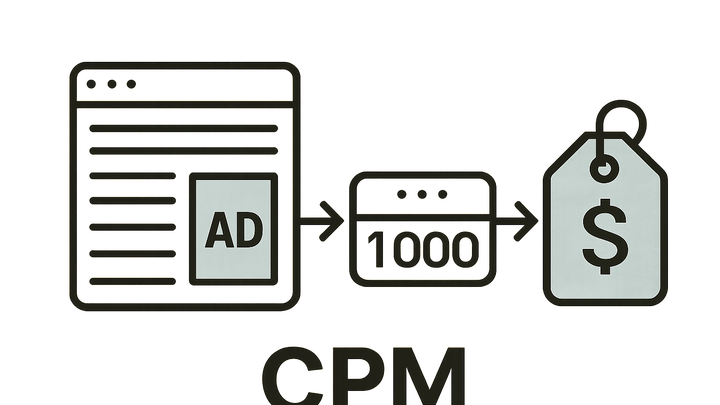Published on 2025-06-26T04:45:20Z
What is CPM? Cost Per Mille Explained
CPM, or Cost Per Mille, is a fundamental metric in digital analytics and advertising, representing the cost an advertiser pays for one thousand impressions. Advertisers and publishers rely on CPM to budget campaigns, forecast spend, and compare the efficiency of different channels or creatives. Unlike click‐based metrics like CPC (Cost Per Click), CPM focuses solely on the number of times ads are served, making it ideal for awareness campaigns where visibility is the primary goal. By normalizing cost against impressions, CPM enables consistent cross‐platform comparison and optimization. Although CPM does not account for user engagement, when paired with metrics like CTR and conversion rates, it offers a comprehensive view of campaign performance and ROI. Common variations include eCPM (effective CPM) and vCPM (viewable CPM), which refine the metric to account for revenue or viewable ad impressions, respectively.
Cpm
CPM (Cost Per Mille) measures advertising cost per 1,000 impressions, crucial for budgeting and evaluating campaign reach.
Definition and Importance of CPM
This section defines CPM and explains why it’s a key metric for advertisers and publishers seeking to measure cost‐efficiency in impression-based campaigns.
-
What is cpm?
CPM (Cost Per Mille) measures the cost advertisers pay per 1,000 ad impressions. ‘Mille’ is Latin for ‘thousand’, and an impression counts each time an ad is displayed.
-
Mille
Latin term meaning ‘thousand’, indicating the metric is standardized per 1,000 impressions.
-
Impressions
The count of how many times an ad is rendered on users’ screens, regardless of interactions.
-
Calculating CPM
Learn how to compute CPM using cost and impression data. Understanding the formula is essential for accurate budgeting and campaign comparison.
-
Cpm formula
CPM is calculated by dividing total ad spend by total impressions, then multiplying by 1,000.
-
Total cost
The aggregate amount spent on an advertising campaign, including media buy and fees.
-
Total impressions
The total number of times the ad was served to users.
-
CPM in Practice: SaaS Analytics Examples
Examples of how to implement CPM tracking in popular analytics platforms, with code snippets and configuration tips.
-
Tracking cpm with PlainSignal
Use PlainSignal’s cookie-free analytics script to capture impression data. Insert this into your HTML head to start collecting pageview and ad impression counts:
<link rel="preconnect" href="//eu.plainsignal.com/" crossorigin /> <script defer data-do="yourwebsitedomain.com" data-id="0GQV1xmtzQQ" data-api="//eu.plainsignal.com" src="//cdn.plainsignal.com/plainsignal-min.js"></script>Then export the impression counts and combine with spend data to calculate CPM.
-
Tracking cpm in GA4
In Google Analytics 4, create custom metrics for ad spend and impressions: go to Admin > Custom Definitions > Create Custom Metric. Define ‘Ad Cost’ (currency) and ‘Impressions’ (count), then use Explorations or the Data API to apply the CPM formula to your collected data.
-
Define custom metrics
Set up ‘Ad Cost’ (currency) and ‘Impressions’ (integer) in GA4 custom definitions.
-
Calculate cpm
Use the formula (Ad Cost / Impressions) × 1000 in Looker Studio or within GA4 explorations to view CPM metrics.
-
Best Practices and Optimization
Tips and strategies to improve CPM measurement accuracy and optimize budget allocation across campaigns.
-
Segment by channel
Break down CPM by source (e.g., social, display, search), device type, or geography to identify where spend is most efficient.
-
Monitor ecpm
Track effective CPM (total revenue ÷ total impressions × 1000) to gauge true earnings rather than just spend.
-
Optimize ad placement
Test different placements, formats, and creatives to lower CPM while maintaining or improving ad visibility and quality.
